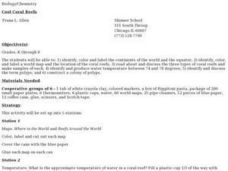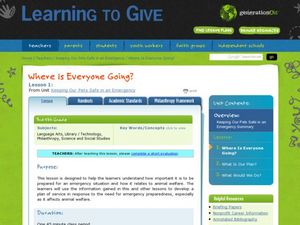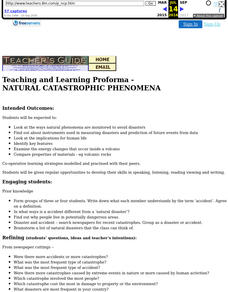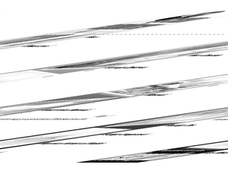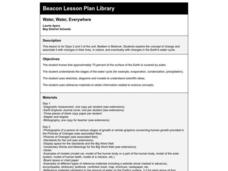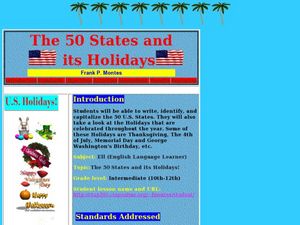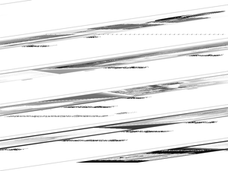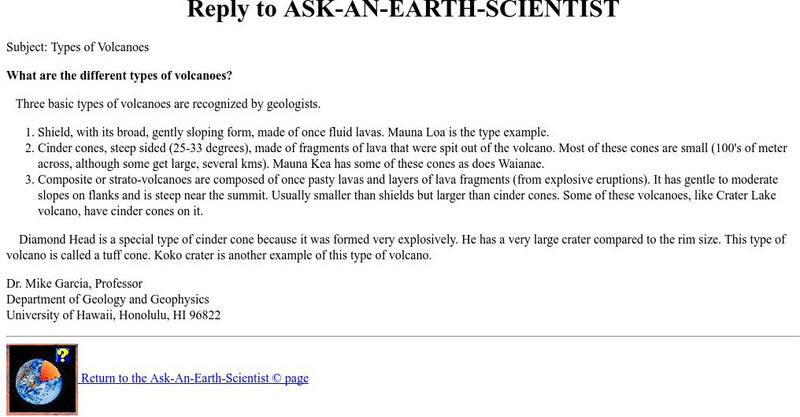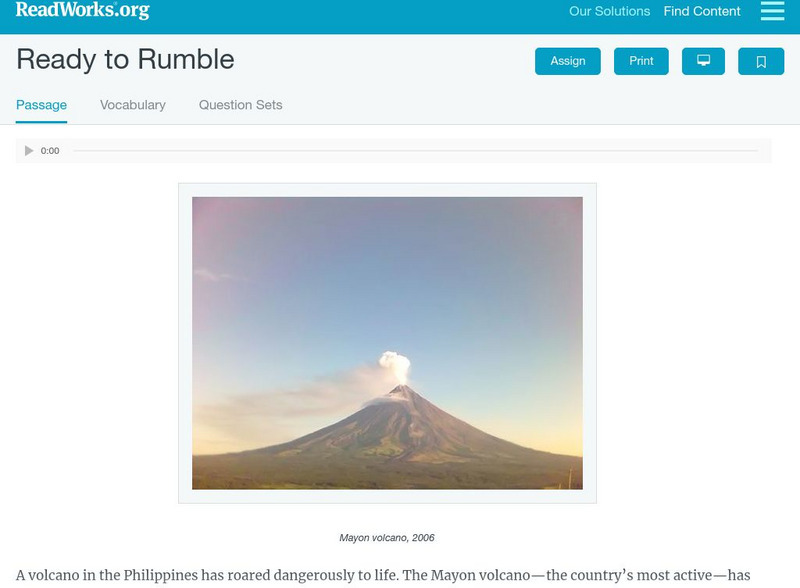Curated OER
Cool Coral Reefs
Students identify, color and label the continents of the world and the equator. They identify and produce water temperature between 74 and 78 degrees. They identify and discuss the term polyps and construct a colony of polyps.
Curated OER
Where is Everyone Going?
Students conduct an experiment. In this emergency response lesson, students watch videos about hurricanes and discuss the difference between natural disasters and man-made disasters. Students perform a hurricane demonstration and...
Curated OER
Keeping Our Pets Safe In An Emergency
Learners fill out worksheets that teach them how to prepare for emergency situations and how to enable animal safety in emergency situations. In this emergency lesson plan, students talk about different kinds of emergencies and how they...
Curated OER
Mapping the National Parks
Students research national parks. For this science lesson, students view a video about the national parks and discuss the environments found within the national parks.
Curated OER
Natural Catastrophic Phenomena
Sixth graders examine the ways natural phenomena are monitored to avoid disasters. They find out about instruments used in measuring disasters and prediction of future events from data.
Curated OER
Science Quiz: Earth Quiz
In this earth science quiz worksheet, students respond to 20 short answer and true or false questions regarding earth science topics.
Curated OER
Matter: All That "Stuff"
In this chemistry worksheet, students learn about matter, including atoms, electrons, protons, neutrons, compounds and chemical properties. They use this information to answer the 10 questions on the worksheet. The answers are on the...
Curated OER
The Rain Forest of Costa Rica
Fifth graders examine and discuss the topography, climate, natural resources and artwork of Costa Rica. They develop a diagram of the layers of the rain forest, and design a tourist brochure or advertisement promoting Costa Rica's...
Curated OER
The Tell-Tale Plume
Students examine hydrothermal vents. In this ocean instructional activity, students identify changes in physical and chemical properties of sea water caused by hydrothermal vents.
Curated OER
Slinky Lab- Simulating the Motion of Earthquake Waves
Sixth graders simulate primary and secondary waves. In this earthquakes waves lesson, 6th graders experiment using a slinky to gain understanding of how waves are created during an earthquake. Students record observations in drawings....
Curated OER
Energizing Resources
Seventh graders describe electrical energy and how it is produced. In this natural resource lesson, 7th graders explain the various ways of obtaining and using natural resources for energy and the environmental consequences. They will...
Curated OER
The 50 States and its Holidays
Though the format of this ELL lesson is confusing (the standards listed are for plate tectonics, yet the objectives are for American geography and holidays), a teacher could glean some ideas from the main idea. Here, pupils complete a...
Curated OER
Plate Tectonics
Students watch a video about plate tectonics. in this Earth Science lesson, students watch a video clip from Bill Nye about Continental Drift and Plate Tectonics. They make a slight crack in a hard boiled egg and manipulate the egg to...
Curated OER
The Chemosynthetic Cafe
Learners study photosynthesis and chemosynthesis. In this chemosynthetic instructional activity students explain the processes of these and define terms.
Curated OER
Drawing Emotions
Students examine how artists have expressed emotion thru use of line, color and shapes. They communicate a variety of emotions using line, shape and values to create form.
Curated OER
Relative Ages of Rocks
In this rocks worksheet, students review how sediments are layered over time and how the relative ages of rocks are determined. This worksheet has 1 matching and 11 multiple choice questions.
Curated OER
How to Recycle a Rock
Third graders explore the rock cycle and explore how rocks are made, changed, destroyed and recreated. They create representations of these processes with hands-on activities.
Curated OER
Where Did It Come From?
Students research island formation, plot locations on a map and make an analysis of why some islands are formed where they are.
Curated OER
Malia
Fourth graders begin their examination of the Hawaiian Islands. Using their island bookmarks from a previous lesson plan, they work together to put the information into a book. They identify the physical and human characteristics of...
Merriam-Webster
Merriam Webster: Dictionary Illustration: Types of Volcanoes: Types of Volcanoes
A labeled diagram of three types of volcanoes: cinder cone, shield, and stratovolcano.
University of Hawai'i
Ask an Earth Expert: What Are the Different Types of Volcanoes?
A concise explanation of the three types of volcanoes recognized by geologists.
Climate Literacy
Clean: Mt. Pinatubo and the Atmosphere
This lesson explores the impact of volcanic eruptions on the atmosphere. Young scholars will analyze three types of visual information: a graph of aerosol optical depth v. global temperature, a global map with temperature anomalies, and...
Read Works
Read Works: Ready to Rumble
[Free Registration/Login Required] Students read about three different types of volcanoes. A question sheet is available to help students build skills in classifying and categorizing.
